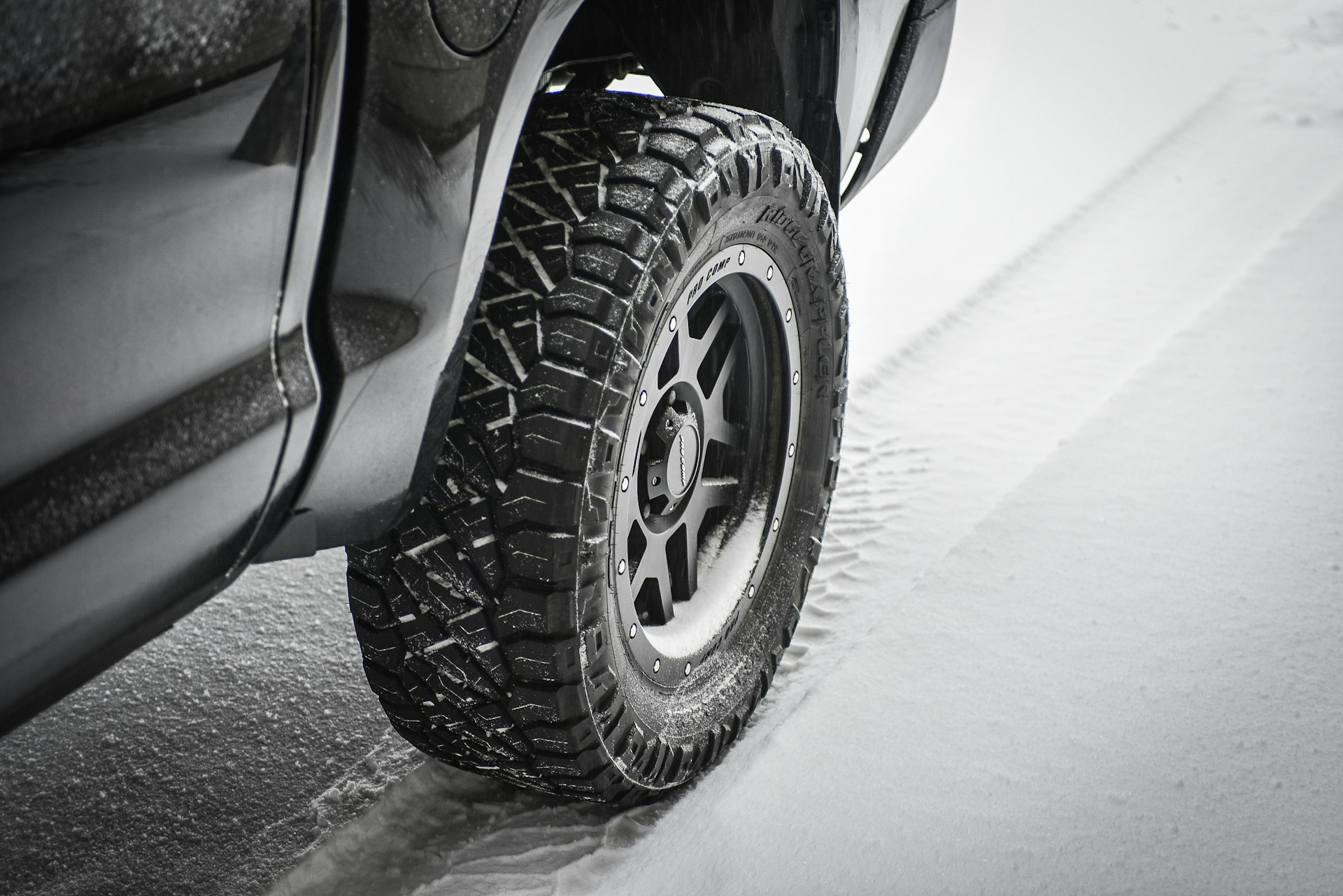Ready to swap out winter tires? This guide highlights ten signs and guidelines to determine the best time to switch to all-season or summer tires. Perfect for seasonal transitions or safe commutes, these tips ensure optimal performance and safety as winter fades and warmer weather arrives.
1. Monitor Average Temperatures
Winter tires are designed for cold weather, typically below 45°F. When temperatures consistently rise above this threshold, it’s time to switch to all-season or summer tires to avoid wear.
Tracking local weather helps pinpoint the ideal time for the swap. Here’s how temperature guides the change.
-
Watch for 45°F and above. Consistent daily averages over 45°F signal it’s time to remove winter tires, costing $20-$50 at shops.
-
Check spring forecasts. In most regions, March or April brings stable warmer weather, prompting the switch.
-
Avoid early swaps. Premature changes risk icy conditions; wait for steady warmth, taking 5 minutes to assess.
-
Swap for performance. All-season tires handle warm weather better, preventing winter tire degradation and improving handling.
2. Check for Snow and Ice Conditions
Winter tires excel in snow and ice, but when roads are clear of these hazards, they’re unnecessary and wear faster. Changing them ensures better performance in spring.
Assessing road conditions helps time the switch accurately. Here’s how to evaluate snow and ice.
-
Look for clear roads. If snow and ice are gone for weeks, swap tires, costing $20-$50 at a shop.
-
Monitor weather reports. Check for no forecasted snow in your area, typically by late March or April.
-
Inspect after storms. Persistent clear conditions post-winter signal a safe time to change tires.
-
Avoid premature swaps. Wait until snow risks are minimal to ensure safety during late cold snaps.
3. Assess Winter Tire Wear
Winter tires with worn treads lose their cold-weather grip, signaling a need to replace them or switch to all-season tires if the season is over. Checking wear ensures safety.
Regular inspections catch excessive wear early. Here’s how to assess winter tire condition.
-
Measure tread depth. Use a $5-$20 gauge; replace or swap if below 4/32 inch, costing $100-$200 per tire.
-
Use the quarter test. Insert a quarter; if Washington’s head is visible, change or replace tires.
-
Check monthly in winter. Inspect treads after 10,000 miles or mid-season to catch wear early.
-
Swap if worn. Worn winter tires are less effective; switch to all-season for better warm-weather performance.
4. Evaluate Driving Performance
Poor performance, like reduced grip or handling, suggests winter tires are worn or no longer needed as temperatures rise. This indicates a need to switch tire types.
Monitoring how tires feel helps time the change. Here’s how performance signals a swap.
-
Notice slipping on dry roads. Winter tires lose traction in warm weather, signaling a switch, costing $20-$50.
-
Feel increased road noise. Softer winter tire compounds get noisy above 45°F, indicating a change is needed.
-
Test braking. Longer stopping distances on dry pavement suggest switching to all-season tires for safety.
-
Check after winter. If performance drops in spring, swap tires to maintain handling and comfort.
5. Inspect for Tire Damage
Damaged winter tires, like those with cuts or punctures, may need replacement or prompt an early switch to all-season tires if winter conditions are gone. Damage compromises safety.
Regular checks catch issues before they worsen. Here’s how to spot damage signaling a change.
-
Look for cuts or cracks. Sidewall or tread damage requires immediate replacement, costing $100-$200 per tire.
-
Check after rough roads. Potholes or debris can cause damage, prompting a swap if winter is over.
-
Inspect monthly. Regular checks in late winter catch damage, ensuring safe timing for a switch.
-
Change damaged tires. Swap to all-season tires if damage is severe and snow risks are low.
6. Follow Manufacturer Guidelines
Tire and car manufacturers provide specific recommendations for when to use and remove winter tires. These guidelines ensure optimal performance and longevity.
Checking your manual or tire specs helps time the swap. Here’s how to follow manufacturer advice.
-
Read the car manual. It suggests removing winter tires above 45°F, typically in spring, costing $20-$50 for swaps.
-
Check tire brand specs. Brands like Bridgestone recommend switching when snow is unlikely, around March-April.
-
Follow seasonal advice. Manufacturers advise swapping after 3-4 months of winter use for best performance.
-
Consult a shop. Mechanics confirm guidelines for $20-$50, ensuring timely and safe tire changes.
7. Consider Regional Climate Patterns
Your region’s climate determines when to change winter tires. Areas with mild winters may require earlier swaps, while colder regions need tires longer.
Understanding local weather patterns guides the timing. Here’s how climate affects the decision.
-
Mild regions swap early. Places like the Pacific Northwest may switch in February, costing $20-$50 at shops.
-
Cold regions wait longer. Northern states like Minnesota often swap in April or May, avoiding late snow.
-
Check local weather. Monitor 10-day forecasts for consistent warmth to time the change accurately.
-
Plan for your area. Adjust based on regional snow patterns to ensure safety and tire longevity.
8. Monitor Tire Age
Winter tires degrade over time, even with low mileage. Aging rubber loses effectiveness, signaling a need to replace or switch to all-season tires in spring.
Checking tire age ensures timely swaps. Here’s how to assess when to change based on age.
-
Find the DOT number. Check the sidewall for a four-digit code (e.g., 2319 means 23rd week of 2019).
-
Replace after 6 years. Swap or replace winter tires older than 6 years, costing $400-$800 for a set.
-
Inspect yearly after 4 years. Check for brittleness or cracks to catch aging issues early.
-
Switch if aged. Older tires lose grip; change to all-season tires in spring for safety.
9. Watch for Increased Fuel Consumption
Winter tires reduce fuel efficiency in warm weather due to their softer compounds and deeper treads. Higher fuel use signals it’s time to switch.
Monitoring fuel economy helps time the change. Here’s how it indicates a tire swap.
-
Notice fuel drops. Winter tires in warm weather lower MPG by 1-2, signaling a switch, costing $20-$50.
-
Track fuel use. Compare mileage in spring to winter; a drop suggests all-season tires are needed.
-
Check after winter. Monitor fuel after snow clears to confirm the need for a tire change.
-
Swap for efficiency. All-season tires improve MPG in warm weather, saving fuel costs.
10. Schedule Professional Inspections
Professional inspections by tire shops or mechanics help determine when to change winter tires. Experts assess wear, damage, and seasonal suitability for accurate timing.
Regular checks ensure you swap at the right time. Here’s how inspections guide the decision.
-
Visit a tire shop. Professionals check tread and condition, recommending swaps for $20-$50 per visit.
-
Schedule in early spring. Inspections in March or April catch the ideal time to change tires.
-
Trust expert advice. Mechanics confirm if winter tires are worn or unneeded, costing $20-$50.
-
Combine with maintenance. Align checks with oil changes to stay proactive about tire swaps.
Conclusion
Knowing when to change winter tires is easy with these ten signs, from temperature shifts to professional inspections. Swap wisely for safe driving. For expert help, our highly professional mobile tire change service connects you to trusted tire professionals 24/7. Keep your tires ready for any season!







